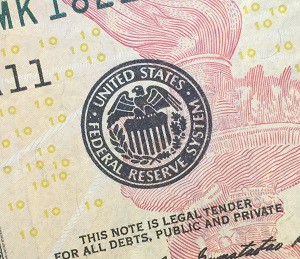 Act Now to Fine Tune Your Commercial Loan Pricing Model for This Year’s Growing Demand
Act Now to Fine Tune Your Commercial Loan Pricing Model for This Year’s Growing Demand
Commercial loan pricing model
It seems that each day brings another financial news article reviewing why the U.S. Federal Reserve Bank did not increase interest rates in March and anticipating an interest rate move to be announced in June or December. Indications of stable U.S. economic conditions continue to pile up, increasing expectations for a Fed rate hike before year-end. The recent US stock market drop and quick recovery were blamed on international conditions.
Now Is a Good Time
Now is a good time to implement or fine tune your commercial loan pricing model. Regardless of the Fed decisions this year , the good news is that the U.S. economy is still showing signs of sustained expansion. You’re going to need to be ready to absorb a continued stream of requests for financing.
A confirmation of economic growth came during a November 3rd, 2015 joint conference involving economists from the Associated Builders and Contractors, Inc. (ABC), the American Institute of Architects (AIA), and the National Association of Home Builders. Speaking at the conference, ABC Chief Economist Anirban Basu said:
“The non-residential construction sector gained momentum over the last year and should continue to expand into 2016. The construction industry has benefited from increased stability stemming from low materials prices and greater certainty regarding federal budgeting and monetary policy.”
Basu predicts “the non-residential construction segment will experience 7 percent nominal growth in 2016.”
Adding to this sentiment, AIA Chief Economist, Kermit Baker, asserted:
“The office and retail sectors are expected to lead the commercial real estate market in 2016 with near double-digit increases in construction spending expected.”
This example is from just one of the sectors of our growing economy. When the painfully slow recovery is finally behind us, don’t let the surge of pent-up demand catch you off guard. Now is the time to examine where your bank stands in terms of its loan pricing strategy.
Banking and Relationship
No one can deny that relationship banking is an advantage in determining risk of default when considering which loans to approve and how to price them profitably. Personal knowledge of the borrower reduces uncertainty and increases opportunities for cross-selling additional banking products and services to this customer, a reliable source of increased revenue for every bank.
But no matter how familiar your loan officers are with local customers, going with their gut cannot produce the precision of a loan pricing model. The results from a properly calibrated loan pricing model is needed to confirm that the pricing of the loan is favorable and on target.
The Benefits of a Pricing Model
Both of these conditions—highly qualified loan applicants and correct loan price structuring—must be met on every loan to ensure the bank’s continuing benefit. Avoiding the mistake of approving a loan that will not meet your ROE targets is as important as approving loans that exceed your ROE hurdle.
Another major advantage of using a commercial loan pricing model is to provide the framework for consistent training, concise communication, and reliable decision-making support. The loan pricing model facilitates reproducible levels of excellence by multiple employees over a multitude of loans involving myriad conditions. You need not be guessing and gambling with each loan application.
Now that it appears we are entering new territory in terms of changing interest rates, what worked in the past may not work well for the future. Contact us today to discuss how your bank’s bottom line can benefit from a commercial loan pricing model.
Alan Lee
www.HurdleGroup.com
Podcast: www.TheSchoolOfBanking.com
1-847-380-2460
